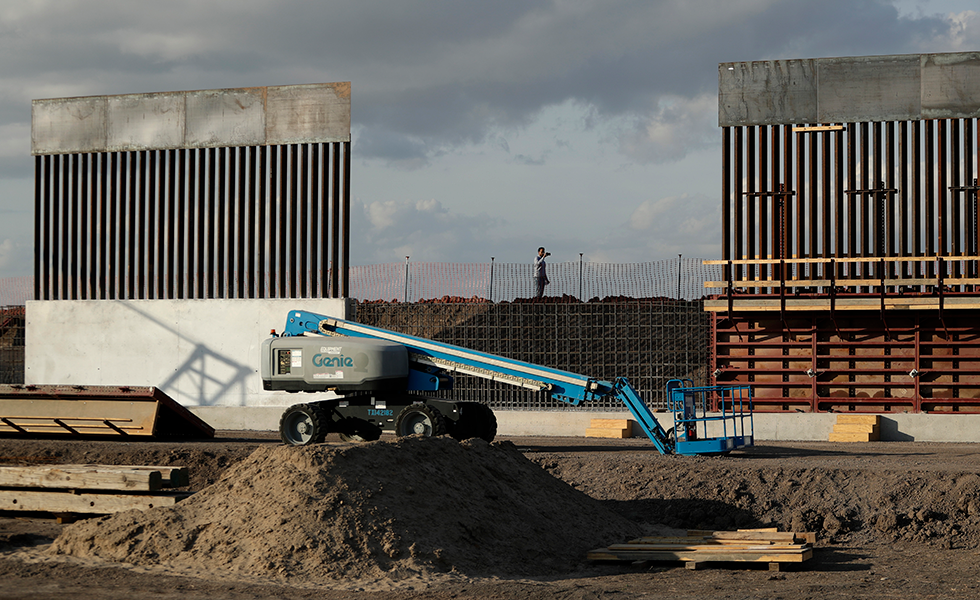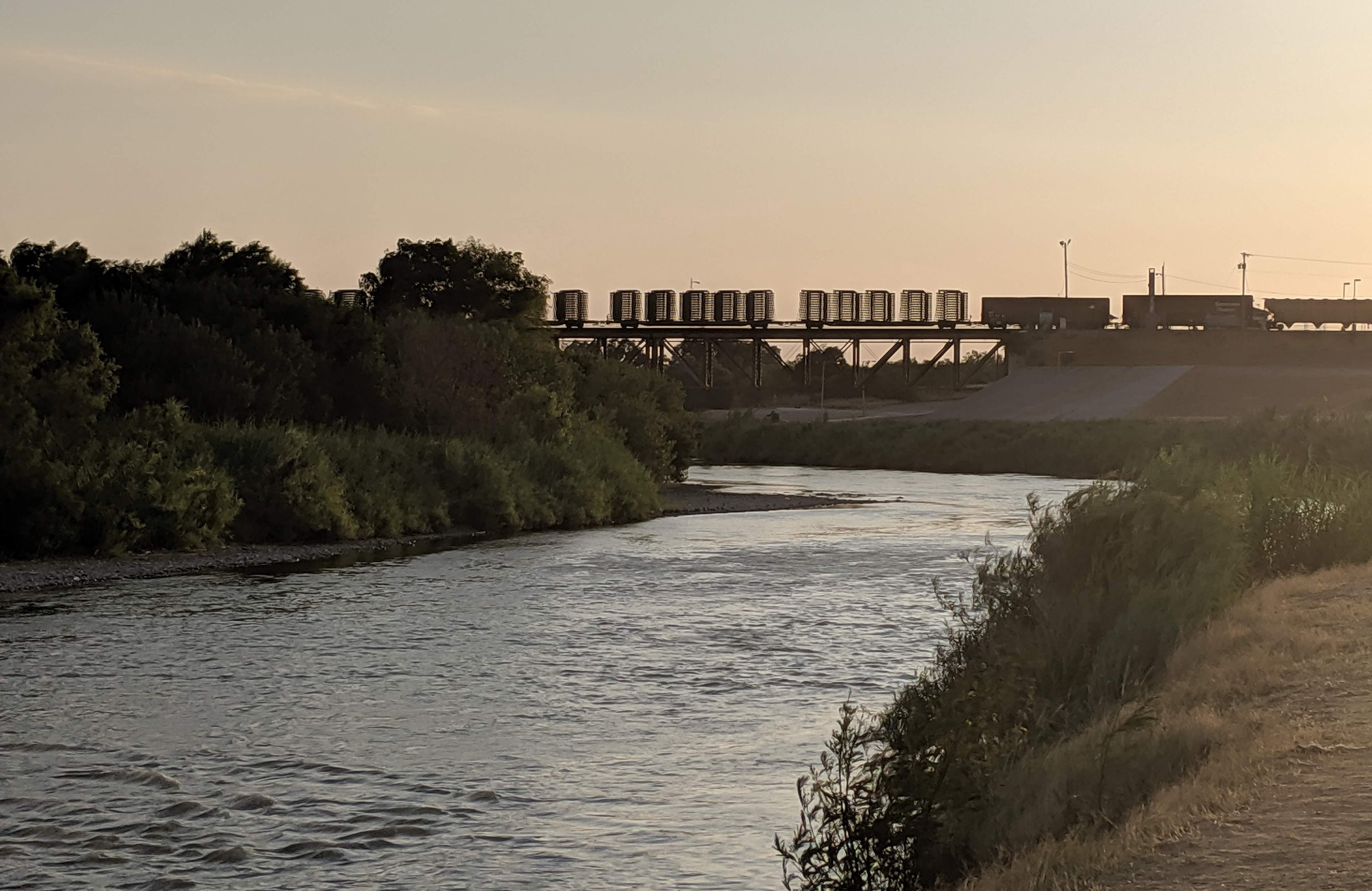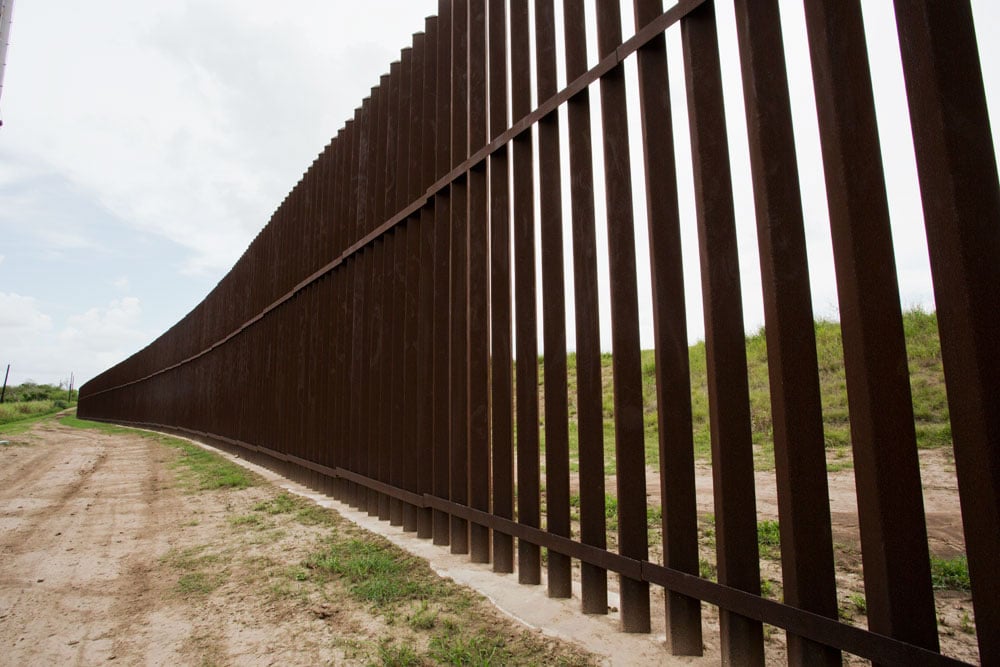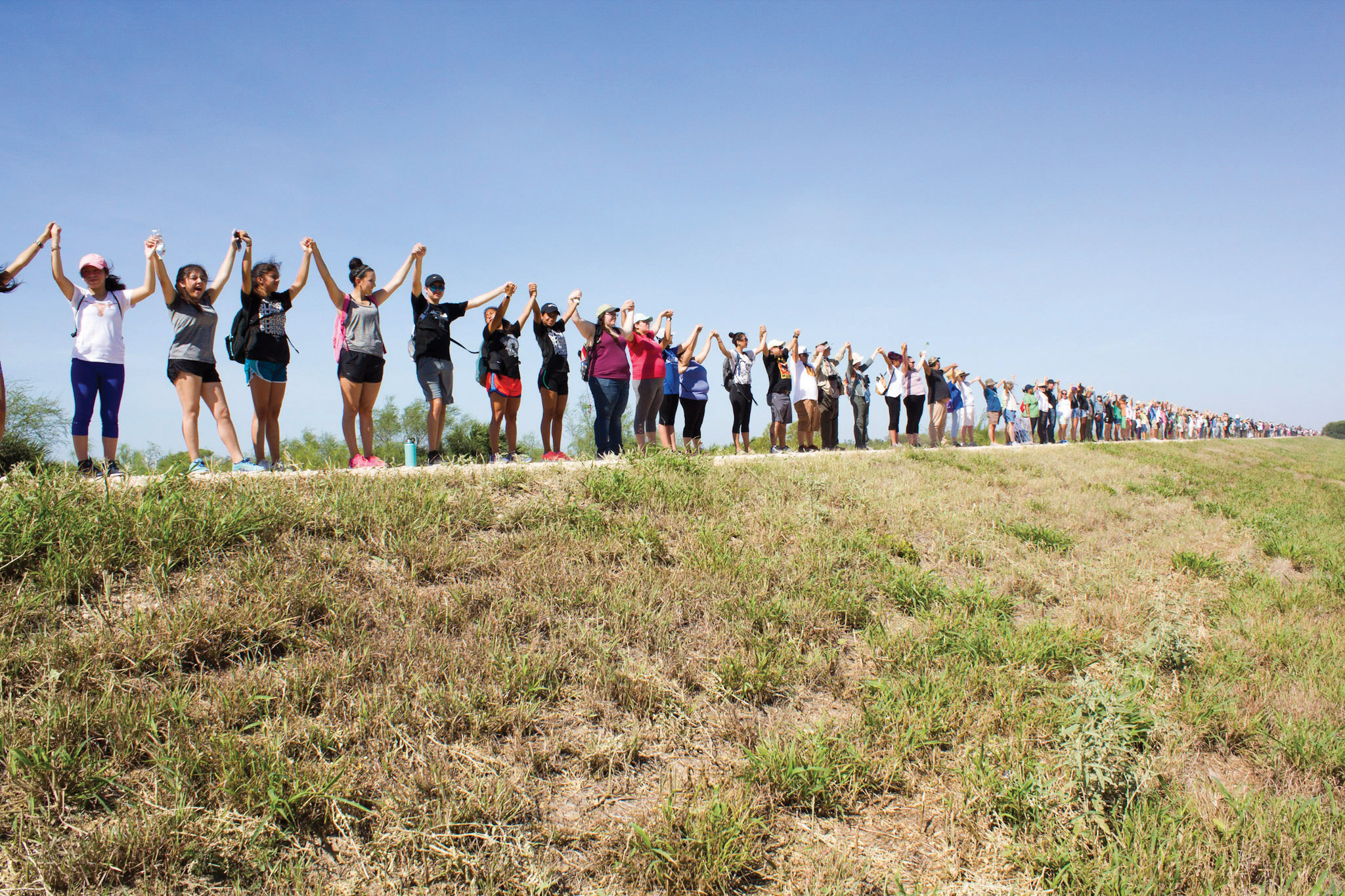
‘Thrown Under the Bus’: Rio Grande Valley Residents Criticize New Border Deal
Some South Texas residents, including those protected from border wall construction by Congress' new proposal, aren't convinced the bargain's a victory for the region they call home.

Above: Protesters form a human chain on the levee at the Santa Ana refuge.
Late Wednesday, a group of congressional negotiators released the text of a much-anticipated border security compromise meant to stave off a government shutdown that would otherwise take effect Friday night. The deal, hailed by many Democrats and major media outlets as a liberal victory over Trump, would protect a number of important South Texas sites from Trump’s wall, including the La Lomita chapel, the National Butterfly Center and Bentsen state park. But the proposal would also hand Trump $1.375 billion for 55 miles of new border wall, all in Texas’ Rio Grande Valley, which is heavily Hispanic, poor and Democratic-voting. Along with 54 miles built a decade ago and another 33 miles that Congress authorized in March, the new funding is nearly enough to wall off the entire region.
Congressman Henry Cuellar, a Laredo Democrat and the only lawmaker from the border who served on the negotiating team, spearheaded the effort to win protections for certain sites and immediately lauded the deal. “This is a big win for the Rio Grande Valley,” Cuellar said in a Thursday press release. “I worked hard to include this language because protecting these ecologically-sensitive areas and ensuring local communities have a say in determining the solutions that work for them is critical.”
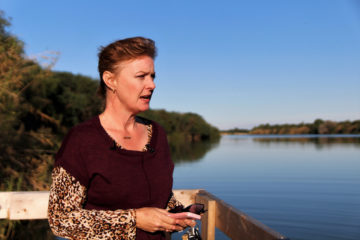
But some Valley residents, including those specially protected by the legislation, aren’t convinced the deal’s a victory for the region they call home. “It’s hard for me to see it that way, when the Democrats who said ‘No wall, no way, not one more penny’ caved — and threw our communities under the bus again,” said Marianna Treviño-Wright, director of the 100-acre National Butterfly Center, which is exempted from wall construction by the proposal. “That our friends and neighbors who didn’t have the platform that we had to protest, that don’t have the wealth and connections of the state park donors and others, are still losing their land, having their property, their inheritances, destroyed — it’s a tragedy.”
Father Roy Snipes, the priest at the 120-year-old La Lomita chapel, which is also spared under Congress’ new deal, echoed the same sentiment. “I feel hopeful, but I’m still worried about our neighbors, because there’s a lot of beautiful places and people who are going to be hurt by this. Like Freddy Cavazos, people with a beautiful place, it’s going to mess them up,” Snipes said. “There’s some beautiful riverbank places up there [in Starr County], wild places — they’re gonna ruin all that.”
The new proposal specifies that 44 of the 55 new miles will consist of 20-to-30-foot-tall steel bollard fencing, to be built mostly in Starr County, according to legislative documents and a congressional aide. The other 11 miles are a combination of concrete levee wall and steel fencing meant to plug gaps in the existing border wall in Hidalgo and Cameron counties. The cost to taxpayers under the deal would be $25 million a mile — up from around $19 million per mile when Congress funded 33 miles in South Texas in March, and almost four times the cost of $6.5 million per mile a decade ago.
“Border walls are a disaster for the Rio Grande Valley, especially Cuellar’s district,” said Sierra club activist and Valley resident Scott Nicol. “Walls in the floodplain in Starr County will put his constituents at risk. Residents will have their farms, and in some cases possibly their homes, condemned.”
The deal, which Trump has signaled he will sign into law on Friday, also mandates consultation between the feds and five local government entities in Starr County. As currently written, the proposal requires that the parties confer over wall design and alignment and try to reach a “mutual agreement” before starting construction. If no agreement is reached by September 30, however, the feds are allowed to start construction anyway. The requirement also appears to only apply to the new round of wall funding, not to last year’s appropriation, which authorized funding for 8 to 12 miles in the Starr County towns of Roma, Rio Grande City and La Grulla. Furthermore, contractor documents obtained by the Observer show that the feds plan to start construction in Starr County in September at the earliest — so the new requirement may not slow down the wall much, if at all. Customs and Border Protection declined to comment on the pending legislation.

Some rural Valley residents don’t fall under the consultation requirement anyway. Nayda Alvarez, for example, is a high school teacher who lives in an unincorporated community between Roma and Rio Grande City, on land her family’s owned for at least five generations. Until Wednesday night, she had hope that her home would be spared because the Trump administration lacked the funds to build in her part of Starr County. The likelihood of the current proposal passing galls her. “We’re looking at flooding from the wall, besides losing property and not having river access. Where do you see the win there?” she said. “Some places are going to be avoided, but what about the rest of us? Some people think, ‘Oh it’s just one house you’re going to lose,’ well it’s my home; it’s my history.”
At least one Texas border congressman opposes the new bargain. Before the final language came out, Brownsville Representative Filemón Vela told the Brownsville Herald on Tuesday of his plans for the proposal. “No matter where the fencing is, I am an absolute NO,” he said. Meanwhile, President Trump is reportedly planning to declare a national emergency on Friday in a legally dubious bid to free up even more money for his “big, beautiful” wall.
